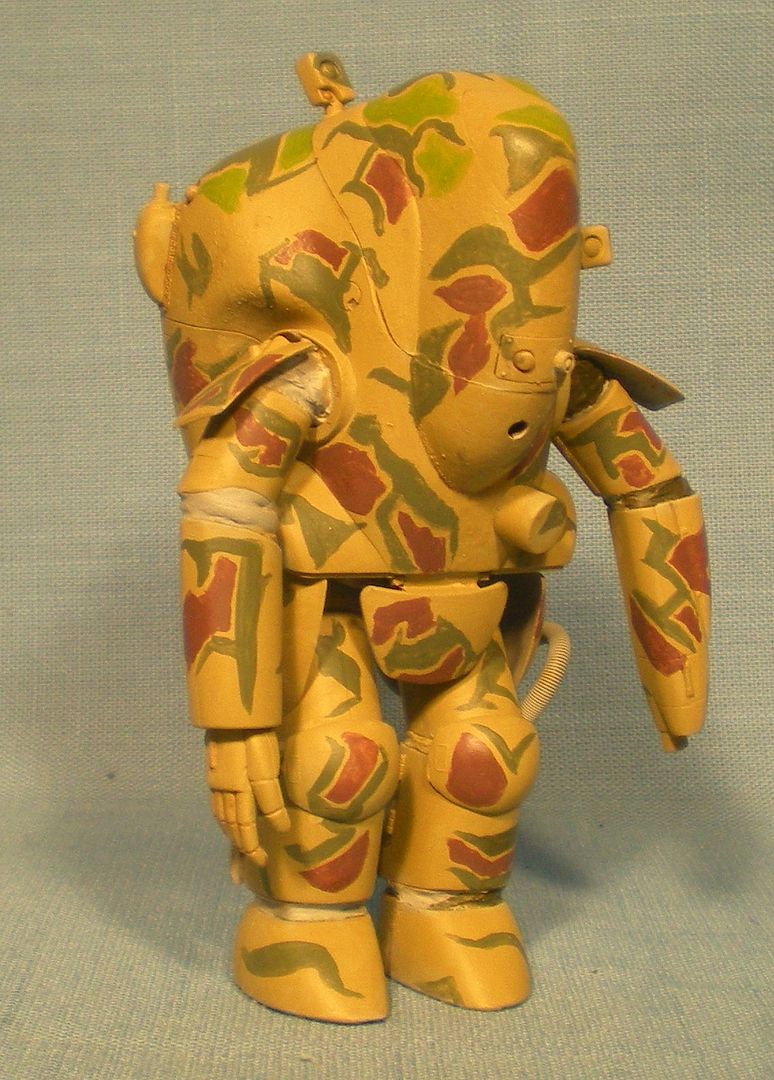Hand painting armour is like hand painting anything. The trick is quality brushes and paints. Due to the area to be covered, I would recommend, assuming you are using acrylics, that you thin your paints well and add a drop of drying retarder to the mix. This will enable you to build up thin layers of colour, don't try to get a full coverage in one or two coats of thicker paints or you will be plagued with brush marks.
Ensure that the plastic is clean prior to painting and, preferably, prime with a rattle can primer. Again, prime with multiple 'dusting' coats of primer rather than trying to cover in one pass.
If you are using enamels such as Humbrol, again, prime then thin your paint and build up the colour gradually. I have seen some amazing work done using brush painted enamels that I could not tell they were not airbrushed. The slower drying time of enamels is better for allowing brush marks to settle and disappear.
Key thing to avoiding brush marks whatever the paint is not to overwork it. Apply a thin wet coat in as few brush strokes as possible and let it dry well before adding the next. If you don't, the second coat will soften the first and cause brush marks to appear.




